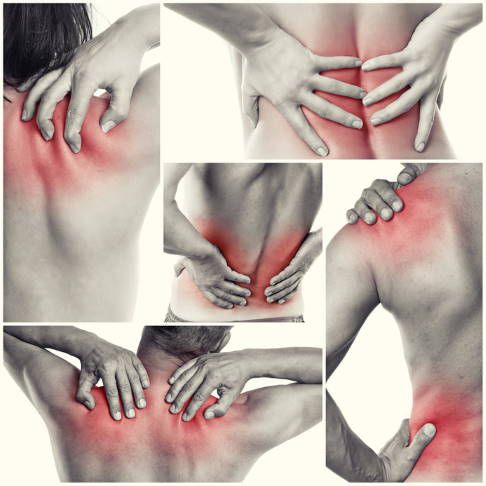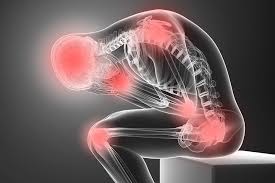
A Comprehensive Guide: How to Relieve Muscle Stiffness
Introduction: Muscle stiffness can be a real pain, both figuratively and literally. Whether it’s from an intense workout, a long day at the office, or simply waking up on the wrong side of the bed, dealing with stiff muscles can put a damper on your day and limit your mobility. Fortunately, there are numerous effective strategies you can employ to relieve muscle stiffness and get back to feeling your best. In this comprehensive guide, we’ll explore a variety of techniques, from simple stretches to advanced therapies, to help you loosen up and live more comfortably.
Prosoma 350mg is ananti-inflammatory medication that reduces swelling and relaxes muscles after injuries or aches and pains in the muscles and joints. By affecting the transmission of impulses in the central nervous system, the active ingredient, carisoprodol, aids in muscular relaxation
-
Understand the Causes of Muscle Stiffness: Before diving into relief strategies, it’s crucial to understand what causes muscle stiffness in the first place. Common causes include:
- Intense exercise or physical activity
- Prolonged sitting or standing
- Poor posture
- Dehydration
- Stress and tension
- Injury or overuse
-
Stay Hydrated: Hydration plays a crucial role in muscle health. Dehydration can lead to muscle cramps and stiffness, so be sure to drink plenty of water throughout the day. Aim for at least eight glasses of water daily, and more if you’re engaging in strenuous activities or exposed to hot weather.
-
Practice Gentle Stretching: Stretching is one of the most effective ways to relieve muscle stiffness and improve flexibility. Incorporate gentle stretches into your daily routine, focusing on the major muscle groups such as:
- Neck and shoulders
- Back
- Hamstrings
- Quadriceps
- Calves
-
Foam Rolling: Foam rolling, also known as self-myofascial release, is a technique that uses a foam roller to massage and stretch tight muscles. Roll slowly over each muscle group, applying gentle pressure to release tension and improve blood flow. Foam rolling is particularly beneficial for targeting specific areas of stiffness, such as the IT band and glutes.
Pain o soma 500mg It seems to be an attractive option for relieving nerve-related discomfort. Nevertheless, there are significant concerns over the medication’s efficacy and safety. muscular relaxants, such as Pain O Soma and others, have long been prescribed to patients suffering from aches and pains caused by things like muscular strains and spasms.
-
Apply Heat Therapy: Heat therapy can help relax muscles and alleviate stiffness by increasing blood flow to the affected area. Use a heating pad, warm towel, or take a warm bath to soothe sore muscles. Heat therapy is especially effective for chronic stiffness or tightness.
-
Try Cold Therapy: Cold therapy, or cryotherapy, can also be beneficial for relieving muscle stiffness, particularly after intense exercise or injury. Apply a cold pack or ice pack to the affected area for 15-20 minutes to reduce inflammation and numb pain. Be sure to wrap the cold pack in a towel to prevent skin damage from direct contact with ice.
Tapaday 200 mg Tablet is an opioid medication for the treatment of acute pain in adults ranging frommild to severe. You can take it to alleviate a wide range of symptoms,including headaches, fever, period discomfort, toothache, and colds. As soon as other pain medicines stop working, it starts working again.
-
Get Regular Exercise: Regular exercise is essential for maintaining muscle health and preventing stiffness. Incorporate a combination of cardiovascular exercise, strength training, and flexibility exercises into your weekly routine to keep your muscles strong, flexible, and pain-free. Aim for at least 150 minutes of moderate-intensity exercise per week, as recommended by health experts.
-
Practice Good Posture: Poor posture can contribute to muscle stiffness and discomfort, especially in the neck, shoulders, and back. Be mindful of your posture throughout the day, whether sitting at your desk, standing in line, or walking down the street. Sit up straight, keep your shoulders relaxed, and avoid slouching to reduce strain on your muscles and joints.
-
Get Adequate Rest: Rest and recovery are crucial for muscle repair and regeneration. Make sure to get enough sleep each night, aiming for 7-9 hours of quality sleep for optimal muscle recovery. Additionally, listen to your body and take rest days when needed, especially after intense workouts or periods of prolonged activity.
-
Consider Professional Treatments: If muscle stiffness persists despite self-care measures, consider seeking professional treatments such as:
- Massage therapy: Professional massage can help release tension and improve blood flow to stiff muscles.
- Physical therapy: A physical therapist can design a personalized exercise program to address muscle imbalances and improve mobility.
- Chiropractic care: Chiropractic adjustments can realign the spine and joints, relieving pressure on nerves and reducing muscle stiffness.
- Acupuncture: Acupuncture involves the insertion of thin needles into specific points on the body to alleviate pain and promote healing.
Conclusion: Muscle stiffness is a common complaint that can range from mildly annoying to severely debilitating. However, by implementing the strategies outlined in this guide, you can effectively relieve muscle stiffness and improve your overall quality of life. Remember to stay hydrated, stretch regularly, and listen to your body’s cues for rest and recovery. With patience and persistence, you can overcome muscle stiffness and enjoy greater comfort and mobility in your daily life.




